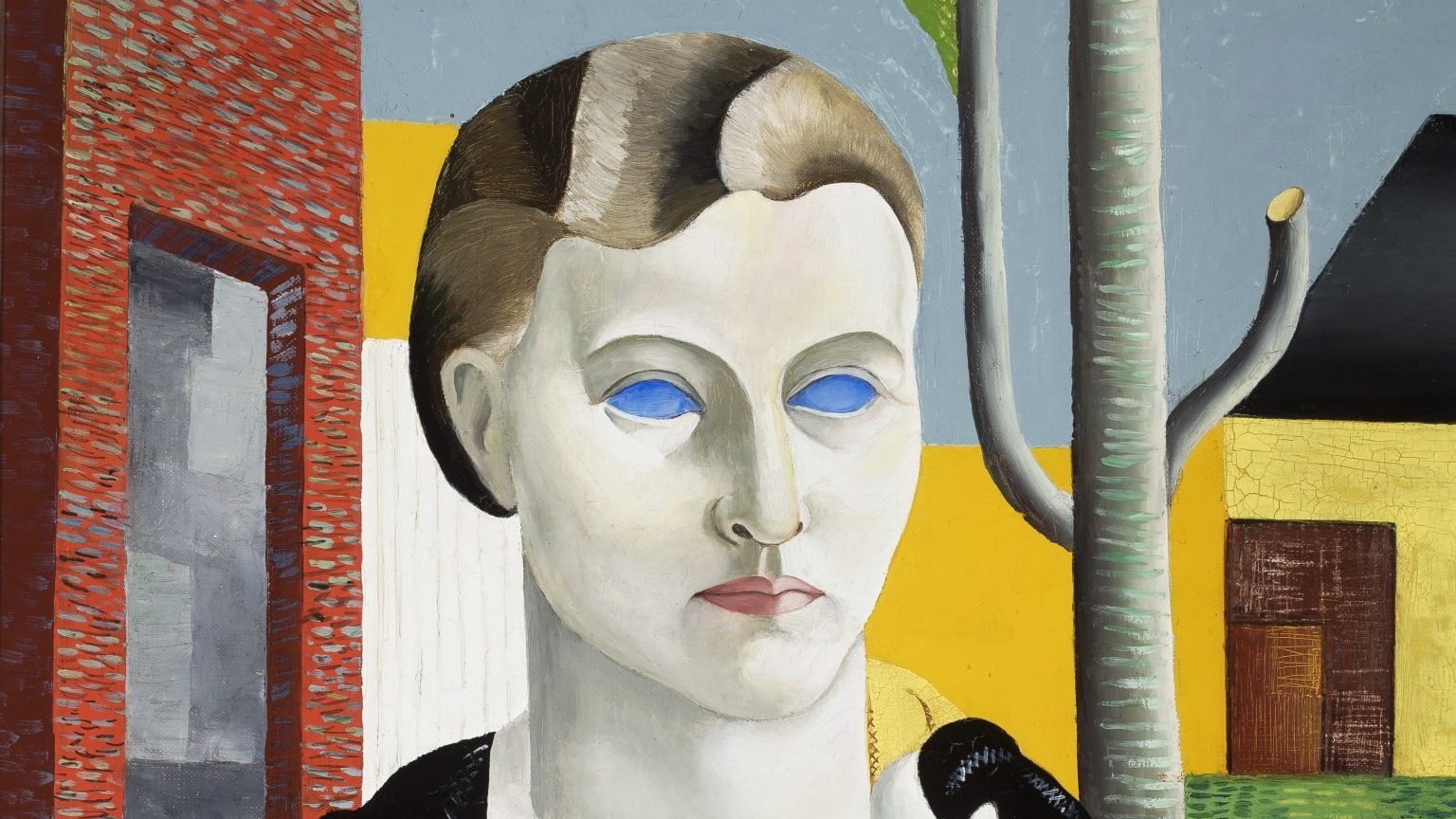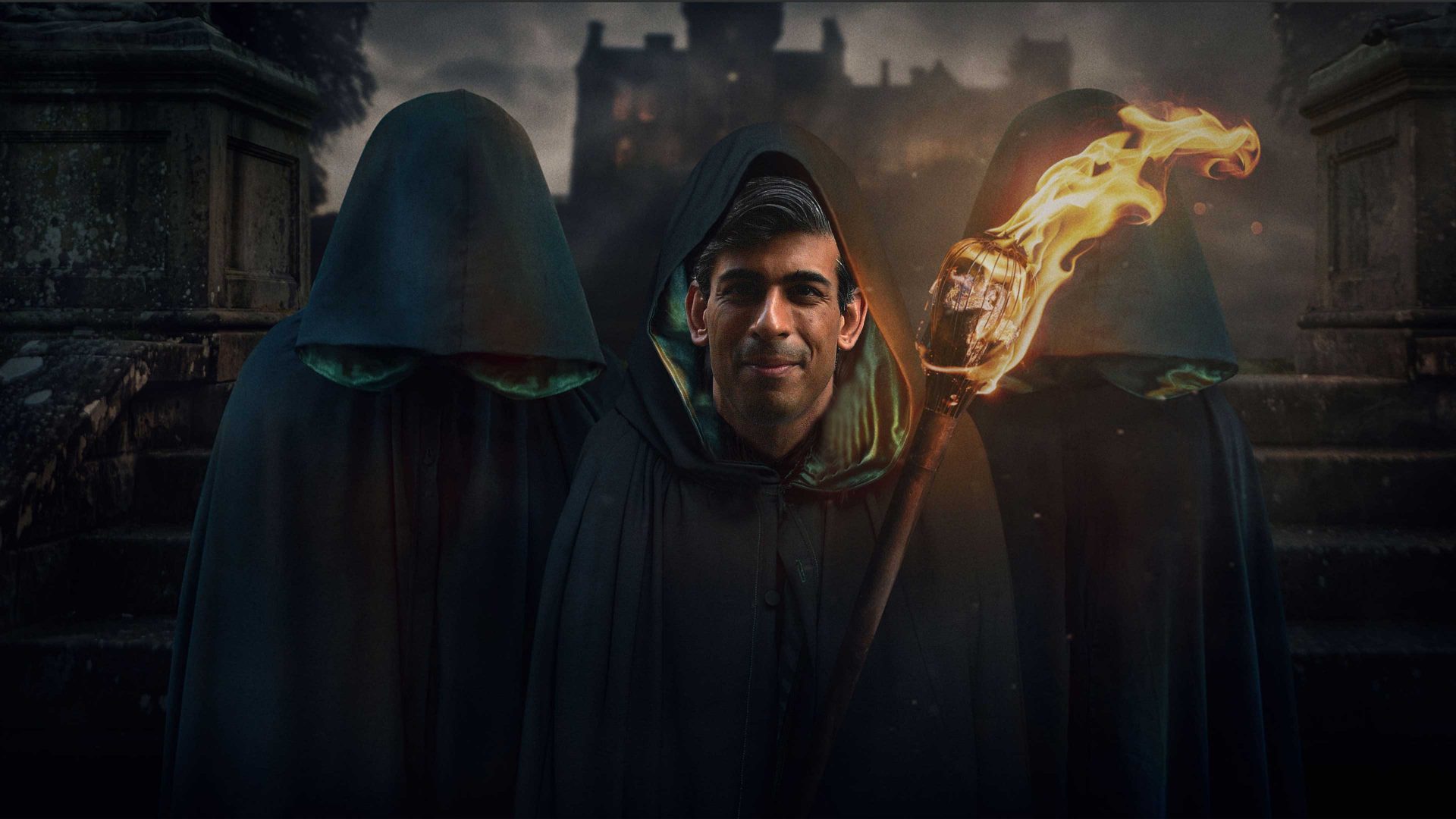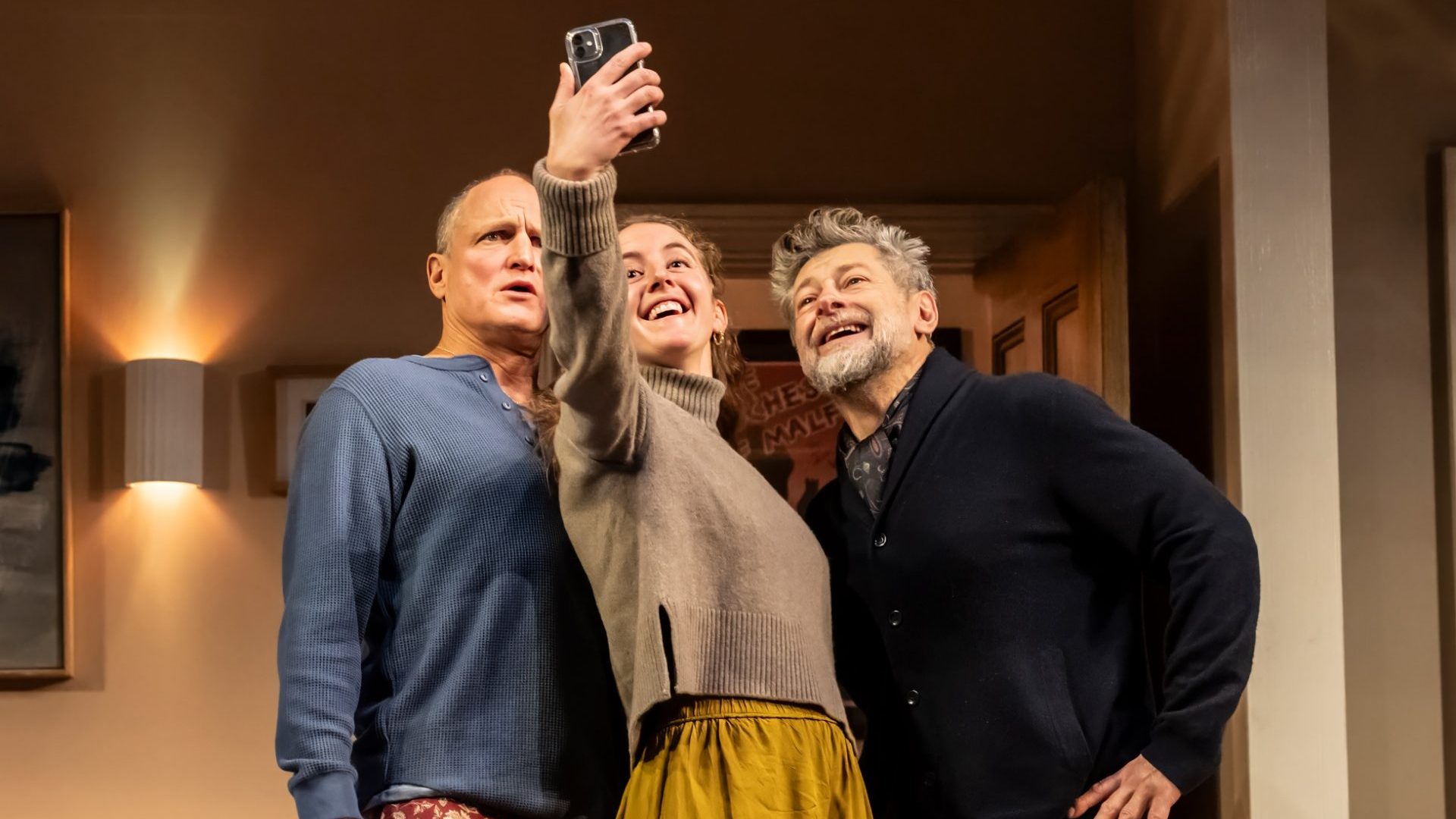An Irish postage stamp, a furious Polish cavalry charge, a cheery scene of dancing Finnish peasants. A trio of images, apparently random and unrelated yet, as a hugely ambitious exhibition at the Irish Museum of Modern Art (IMMA) in Dublin argues, all connected by time if not place and by shared aspirations as a burgeoning sense of nationhood gripped many European countries at the end of the first world war.
The show Self-Determination: A Global Perspective (until April 21) is the fourth in a series staged by IMMA to mark the 100-year anniversary of the foundation of the Irish Free State. It scrutinises the struggles of countries for independence, not from the perspective of Irish exceptionalism, but from that of the states which emerged from the dereliction of the first world war – Estonia, Finland, Ukraine, Poland and Turkey.
Whatever their economic hardship or political confusion, the show illustrates how art and culture were harnessed to express their new-found nationhood. Which is where the postage stamp, the charging cavalry and the dancing peasants come in.
The Free State needed a simple imprint to validate its independence. The imperial red pillar boxes were swiftly painted green, but a more meaningful symbol was required. A postage stamp. But how? Printing was a lengthy business. The splendidly subversive solution was to take the existing stamps and imprint the words Saorstát Éireann (Irish Free State) over the head of George V.
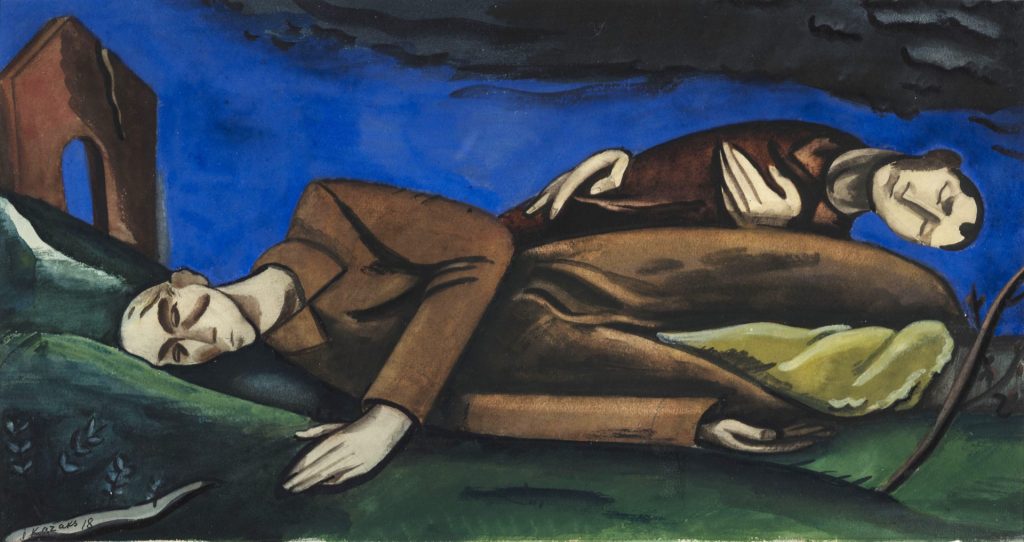
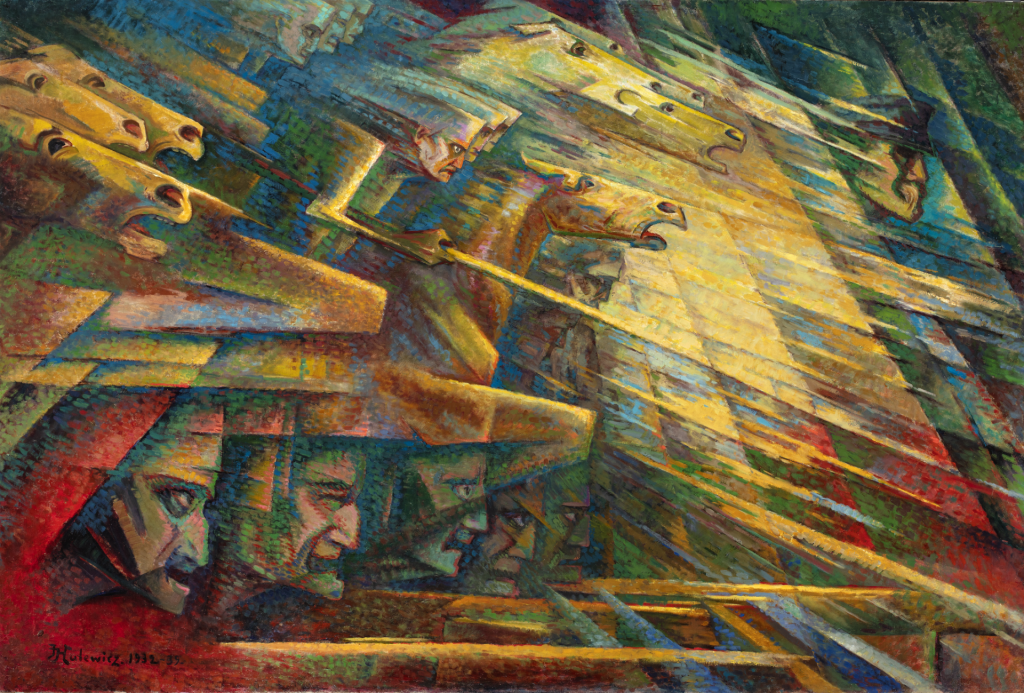
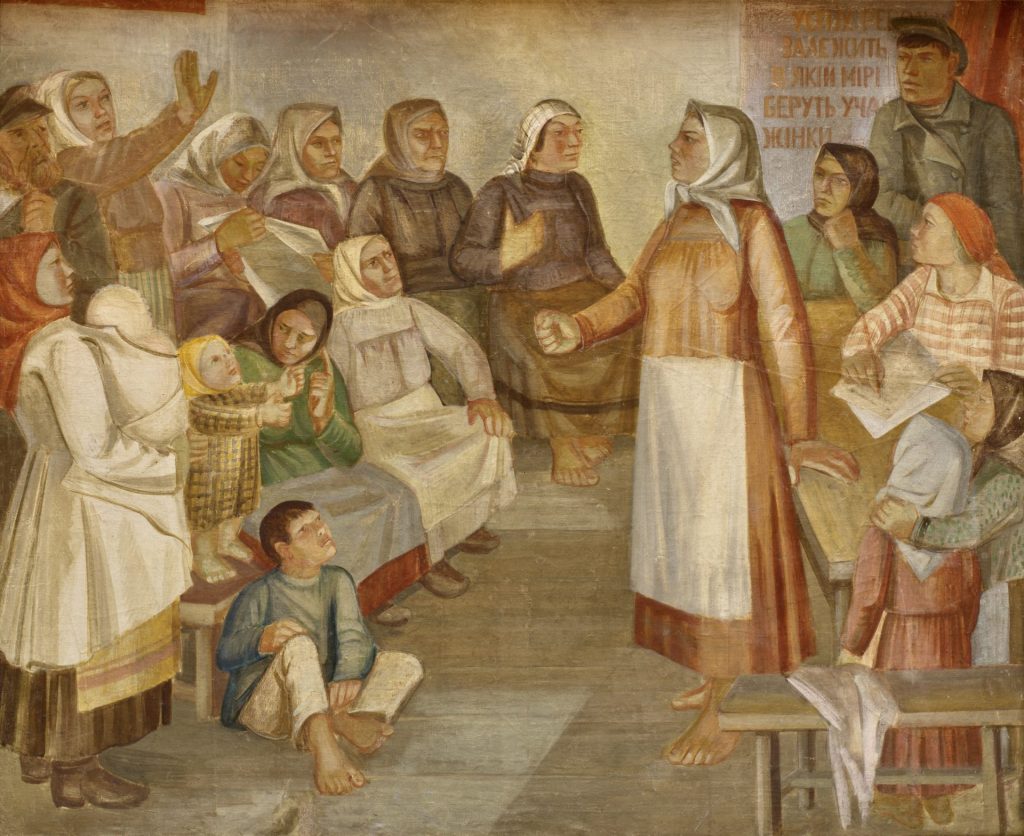
In Poland, the artist Jerzy Hulewicz painted Charge (1932-38), which glorified the Polish Legions in a tumultuous gallop, all wild-eyes and flared nostrils, men and steeds alike, as they repelled the invading Soviet army at the Battle of Warsaw in 1920.
By contrast, in Midsummer Night Dance (1911) Antti Favén, a popular Finnish landscape painter, celebrated the jolly custom of people meeting on a bridge to dance and party, a tradition that became symbolic of hope and reconciliation after the Finnish civil war of 1918.
In their differing styles and contrasting content all three tell a similar narrative of defiance and emancipation. Of self-determination.
Rather than treating the subject country-by-country the exhibition takes it thematically, assessing the importance of theatre, architecture, education and language as well as politics, economics and power.
The role of women is examined in the specially commissioned Limits of the State, a hugely complex “map” by Finnish artist Minna Henriksson, which fills a wall with names and events, connected by a maze of lines and handwritten explanations that draws parallels (and differences) between her home country and Ireland in the 1920s and 30s.
As the map details, in the early postwar years the future looked relatively bright for women. Finnish women had won the vote in 1906 while in Ireland the fiercely Republican Constance Markiewicz was the first woman to be elected as an MP in 1918.
But after civil war afflicted both countries, their rights were chipped away. The Catholic church and the Irish conservative hierarchy found common cause with Taoiseach Éamon de Valera whose constitution in 1937 ensured women were paid less than men and barred them from working in the public sector if they were married.
In Finland, the diminution of rights was extreme following the victory of the Whites – right wing bourgeoisies – over the Reds – working class and socialist. Governments embarked on proto-Nazi programmes of wiping out racial impurities and in 1935 even enforced sterilisation on those deemed unsuitable to have children. The law was annulled only in 1970.
If women were denied a meaningful role in their new societies there was always work for men. Estonian Kuno Veeber’s dramatic Cubist representation of muscly, grunting blacksmiths testifies to that, as do Volodymyr Vainreb’s Ukrainian workers as they strain every limb in the heat and sweat of the forge. In contrast to that sheer physicality, the saws, shovels and pick-axes in Coal Mining Still Life by Franjo Stiplovšek (Slovenia, 1929) brings a quiet sense of purpose to such mundane objects.
Grand infrastructure projects spoke of national progress and pride. Between 1926 and 1928 Seân Keating painted a series on the damming of the River Shannon, then the largest project undertaken in Ireland and a proud signifier of national confidence. Keating’s eye was unflinching, however, documenting the grim lives of the workers, the grubby canteen, shabby dormitory, the harsh iron of the powerhouse and the dam itself towering over the workers sloshing about in mud.
Just as important to Ukraine was a dam over the River Dnipro. Does the dam represent progress in Dmytro Vlasiuk’s 1932 allegorical work? Are the waters sweeping away outmoded agricultural practices and replacing them with modern working practices – combine harvesters doing the work of weary peasants, horses and ploughs? Or, as others argue, by flooding the land, untold damage will be done to the traditional environment and local culture? Either way, national identity is at stake.
It is painful to reflect that it was national security at stake when the Kakhovka Dam was destroyed by the Russians last year.
If this part of the exhibition, set in a wing of the granite grey of the 17th-century Royal Hospital Kilmainham, is predominantly subject-driven, the Garden Galleries next door are about people. People in mythical landscapes, people yearning for authenticity, honouring their heritage, people having fun.
But first, the fight for freedom. Seán Keating’s Men of the South (1921), one of the most famous images of the Independence War, shows a group of IRA men, guns ready, waiting to ambush a British patrol. Determined, single-minded; if Britain is unwilling to allow them freedom, they will seize it.
The figurative style and poised sense of imminent violence is a contrast to our Polish freedom fighters in all their Futurist frenzy, which hangs alongside.
The sense of threat is never far away. In Black Flag (1916), Ljubo Babić recalls Croatian reaction to the death of the hated Austro-Hungarian Emperor Franz Josef. Working from his second-floor studio, Babić imagines a huge black flag against a lowering sky and hangs it ominously above the agitators who are demanding their independence.
Latvian Jēkabs Kazaks, captures the inevitable result of conflict in the haunting images of the forlorn families in Refugees and the exhausted figures in I Laid my Head on the Boundary Line while the anguish of Jewish refugees fleeing the pogroms of Ukraine is painfully rendered by Manuil Shechtman in Emigrants (1929).
Many of the paintings reflect traditional scenes such as gathering in the potato or wheat harvest, fishermen braced against the waves and contented farmers. But if these are gently undemanding, Slovenian Tone Kralj, who has some of the most powerful images in the show, offers something of a corrective with By the Sweat of Your Brow. Naked bodies sweat and strain as if grappling with the very earth itself.
As one might expect, Irish myth plays an important part. In Jack B Yeats’s A Race in Hy Brasil spectral figures appear on a phantom island, a paradise of peace and eternal life but only visible every seven years, while in William Conor’s Ulster Past and Present (1931) tribesmen emerge from ancient lands to march through the arch of a dolmen into the modern reality of Belfast’s Harland & Wolff shipyards.
The mood lightens. The dancing peasants in Forgiveness in My Village by Krsto Hegedušić captures a brief respite from conflicts that plagued Croatia throughout this era, and two striking Cubist-inspired works suggest a time of simple pleasures – In the Barroom by Croatian Vilko Gecan and Concert by Estonian Felix Randel are among the most original in the exhibition.
And, pretty daring for 1929, Micheál Mac Liammóir’s Monte Carlo has same-sex couples strolling unabashed in that glamorous hot spot.
If the Finns danced on bridges, the Irish got together to party where roads met as celebrated by Charles Lamb in Dancing at a Northern Crossroad, a cheerful moment painted in 1920 before partition split north and south.
De Valera was accused of dismissing it as nothing more than “comely maidens dancing at the crossroads”, but the fact that he never actually said it did not deter Alan Phelan from lampooning him in Eamon Often Spoke in Tongues (2007), a grotesque sculpture complete with an absurdly long tongue made of snakeskin leather.
But perhaps one “comely maiden” – or rather one bold female – can speak, not just for her sex but for all those struggling to find self-expression.
In the painting Women’s Meeting by the Ukrainian artist Oksana Pavlenko, the speaker is addressing an attentive group of peasants. Pavlenko was a known activist, which might explain why the painting was deemed so subversive by the Stalin regime that it was never shown to the public and buried. Pavlenko died in 1991, but during the revolution against Russia of 2014 her painting was rediscovered.
And there it hangs on the walls of IMMA, a testimony to self-determination, however long it takes. It is a battle that Ukrainian artists are fighting with paintbrush, camera and imagination today.
Self-Determination: A Global Perspective is at the Irish Museum of Modern Art, Dublin, until April 21, 2024


